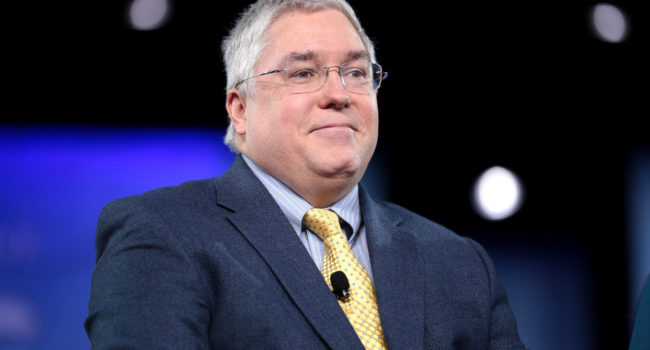MORGANTOWN – State Attorney General Patrick Morrisey said Tuesday he will vote no on confirming Purdue Pharma’s bankruptcy plan, which will allot money to the 50 states for opioid treatment and abatement.
Morrisey said during a press conference that he opposes the plan because it’s based on population, not the intensity of the problem within the state, he said. “Any such allocation formula fails to recognize the disproportionate harm caused by opioids in our state. I look forward to arguing our case in court this August.”
Purdue Pharma, the maker of OxyContin, filed for bankruptcy in September 2019 to settle the thousands of lawsuits against it stemming from its role in the opioid crisis.
Under the plan, Purdue will be dissolved. An amount Purdue describes as “more than $10 billion in value” will be transferred into various trusts dedicated to opioid programs. Purdue’s assets will be transferred to a new company and owned by a new National Opioid Abatement Trust and an abatement trust established to satisfy claims asserted by Indian Tribes and Tribal Organizations.
The bankruptcy case is being heard in federal bankruptcy court in New York. Votes for or against the plan must be filed by Wednesday, July 14, and objections must be filed by Monday. The confirmation hearing is set for Aug. 9.
In April, Morrisey filed his objection, arguing, he said, that Purdue’s failure to disclose how its proposal would be split among states undermined its desire to avoid court challenges to an inherently inequitable arrangement. That led to Purdue disclosing publicly the population-based Denver Plan.
Under the plan, court document show, West Virginia would get 1.16% of the total allotment. Neighbors Ohio and Pennsylvania would get 4.36% and 4.59%, respectively. California would get 9.92%.
Morrisey said the intensity of the problem makes up just 1% of the allotment formula.
He said previously that West Virginia has developed an alternate allocation plan, using as its starting point models developed by federal agencies such as the Substance Abuse and Mental Health Services Administration (SAMHSA) that accounts much more directly for the effect of intensity issues than does the interstate allocation plan. He noted Tuesday that intensity makes up 15% of the SAMHSA formula.
Morissey pointed out Tuesday that California, which would receive the largest share of the allocation under the Denver Plan (Florida is second at 7.02%) also is the only state not contributing to the intensity fund. He calls this the “California cash grab” and said, “California needs to step up.”
California should pay into the intensity fund, he said, and the intensity factor should be raised to a higher percentage. “We’re going to keep pushing.” He plans to argue the issue before the bankruptcy court during the August hearing.
Numerous cities and counties across the country and the state have also sued Purdue, and Morrisey said he’s urging all those in West Virginia to also oppose the plan. Some already have and he hopes more will join. In north-central West Virginia, Granville, Clarksburg and Shinnston have all joined suits.
Morrisey said he wants to create a meaningful abatement recovery fund from the money in the Purdue case, a similar bankruptcy case under way by opioid maker Mallinckrodt – where a similar population-based formula is also on the table – and $10 million the state received in the McKinsey opioid case settlement. He’s looking forward to sitting down with the cities and counties to negotiate the best terms and allocate the funds among them.
The recovery fund “is one of the most critical things we’re working on right now. We have to get it right,” he said.
Tweet David Beard @dbeardtdp Email dbeard@dominionpost.com




